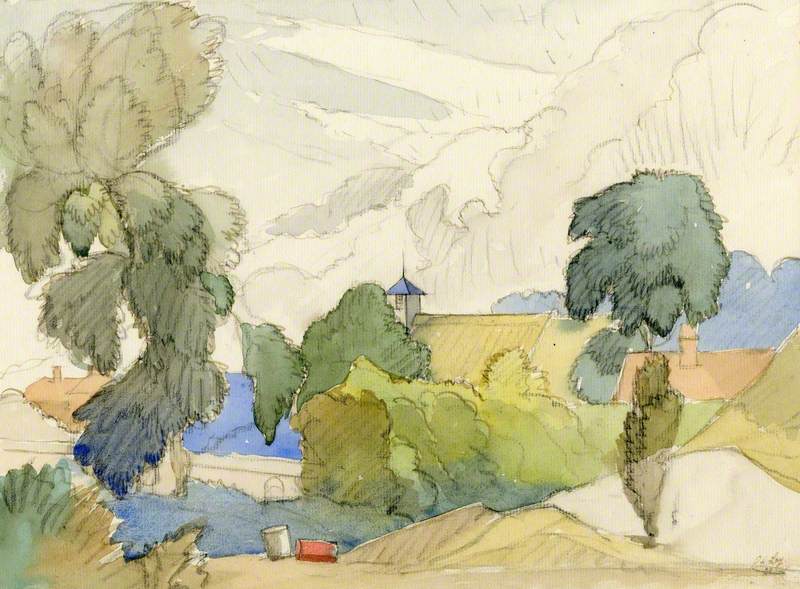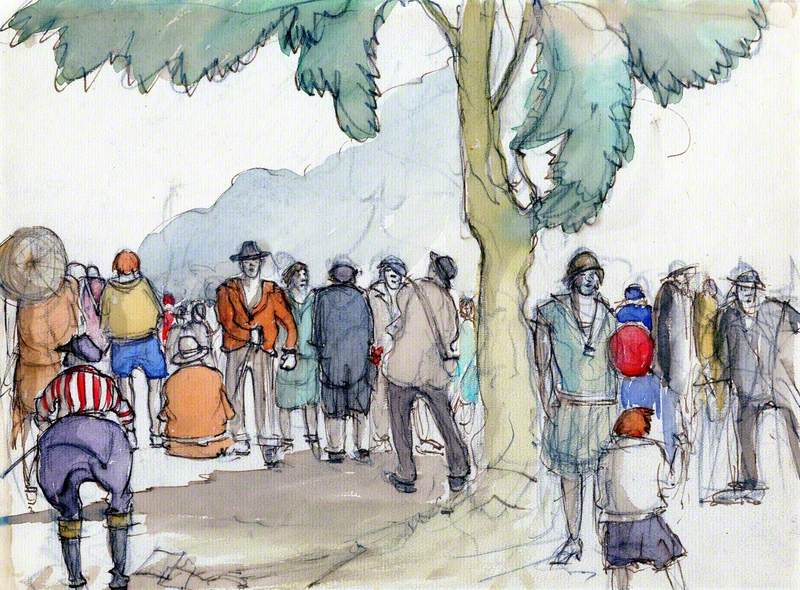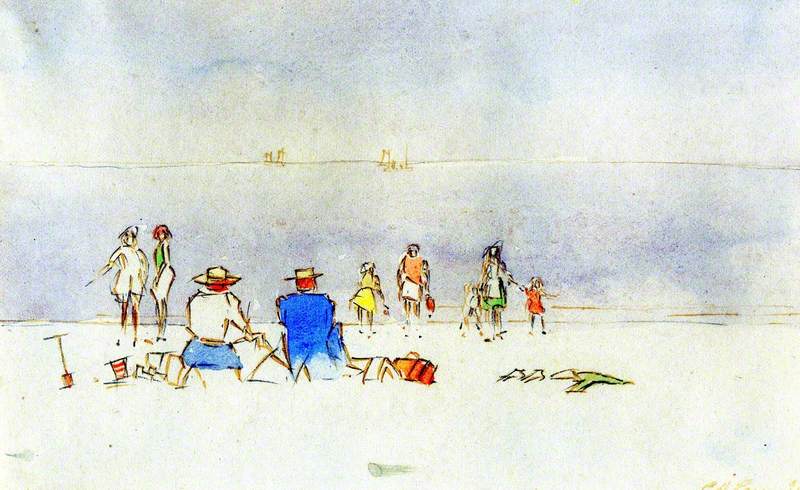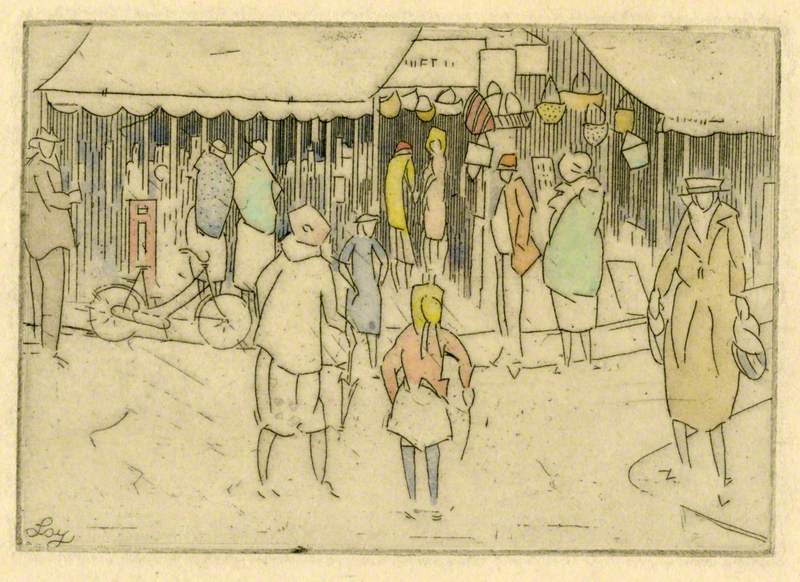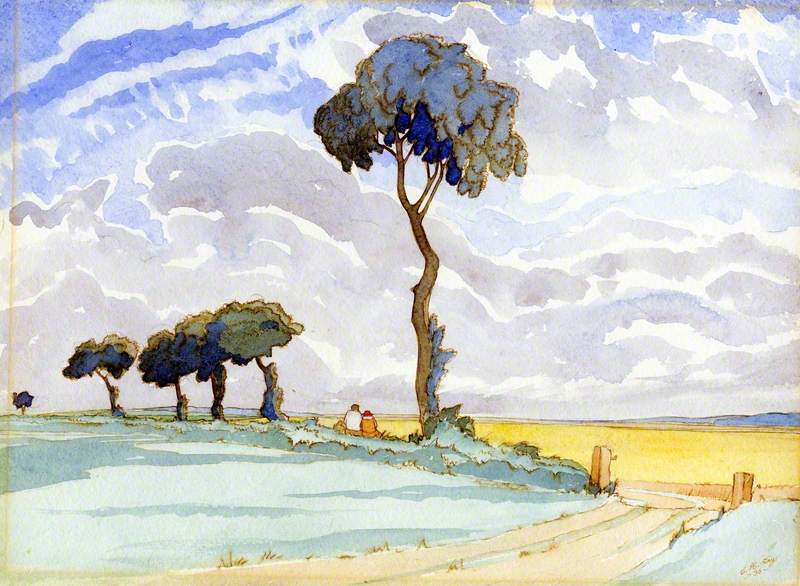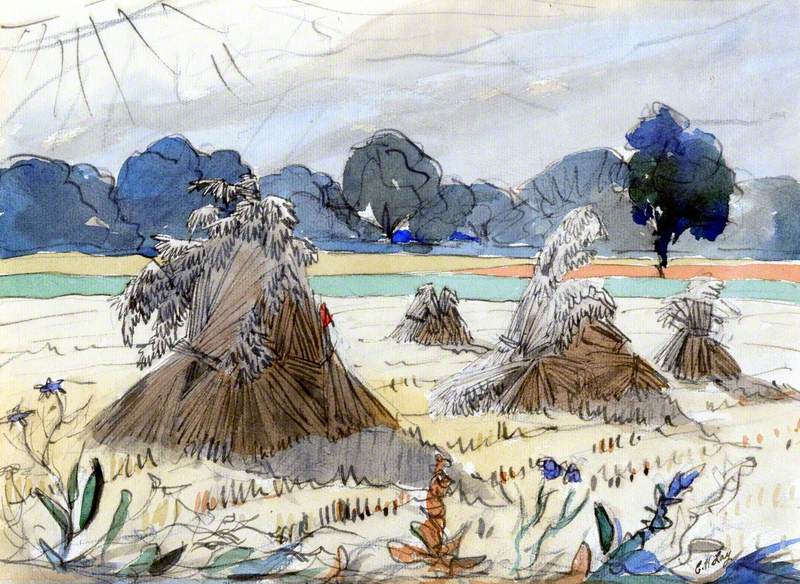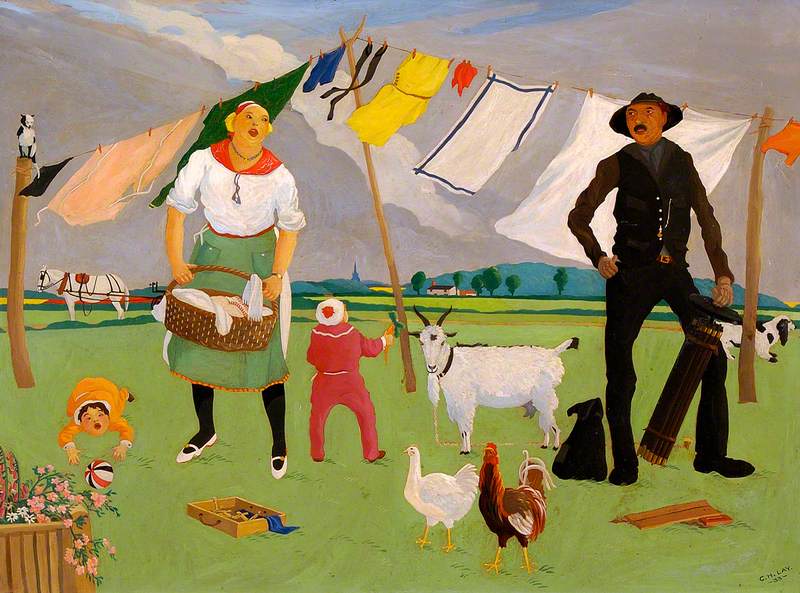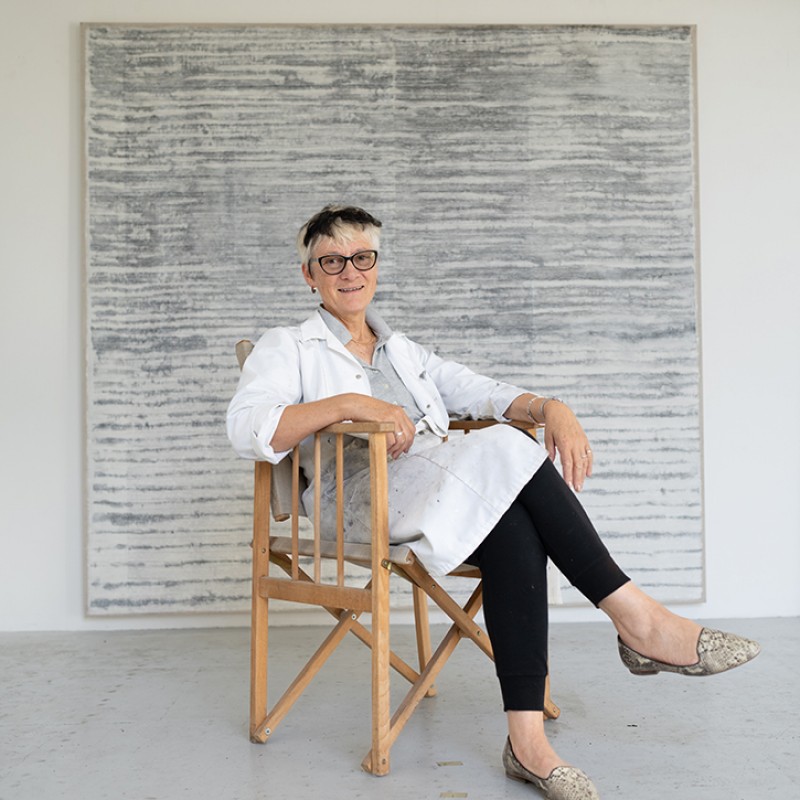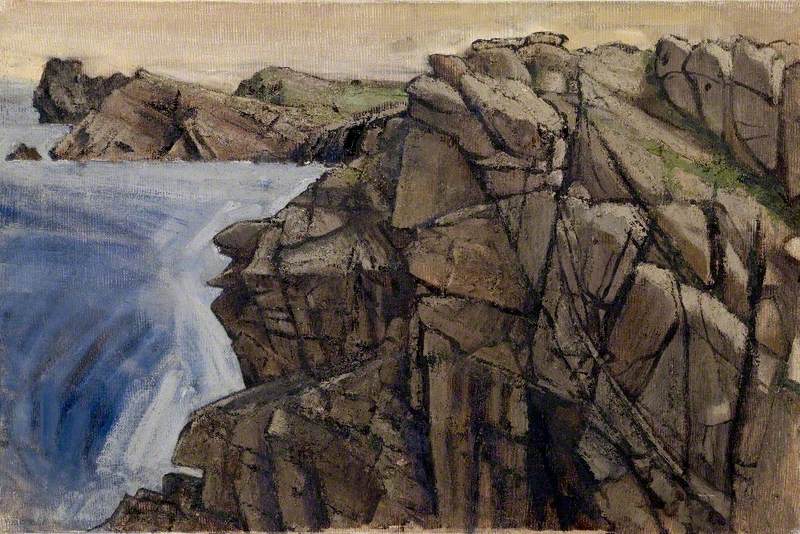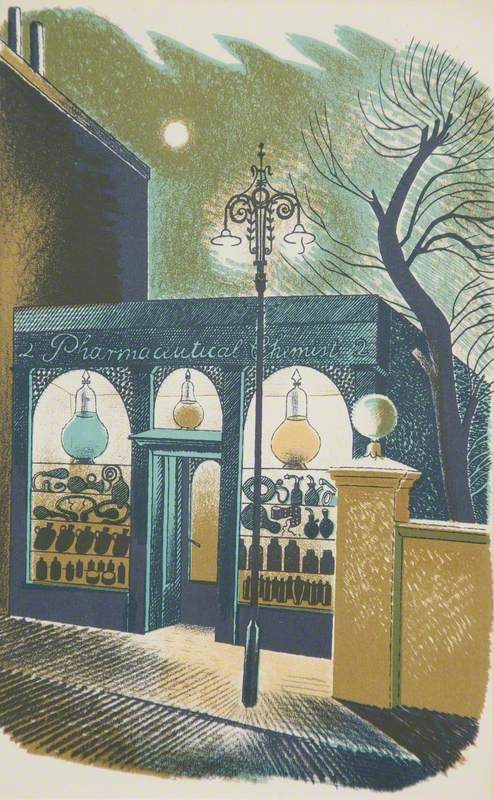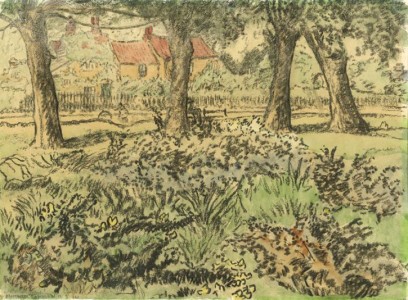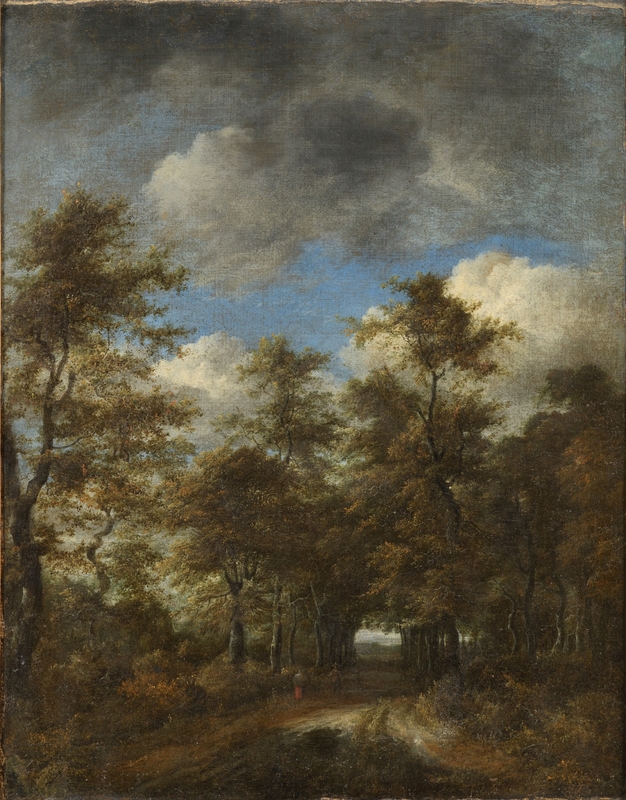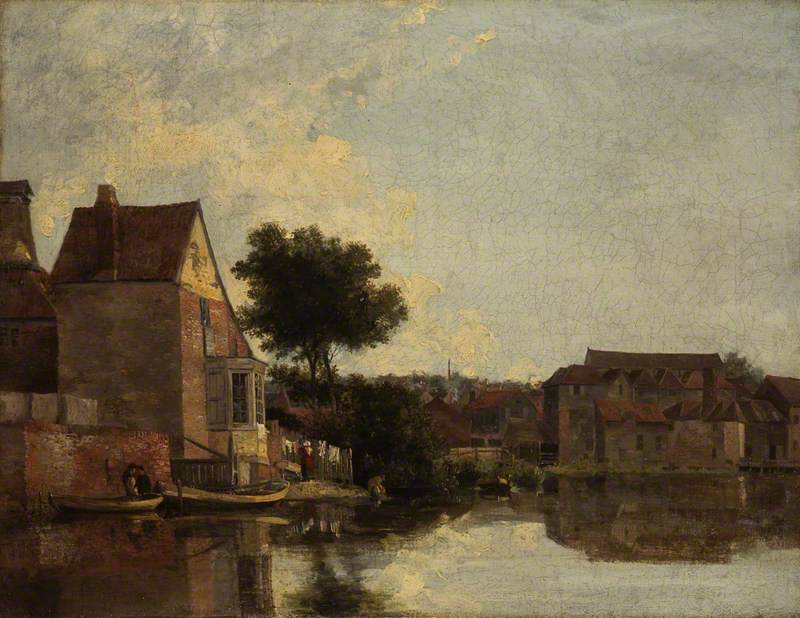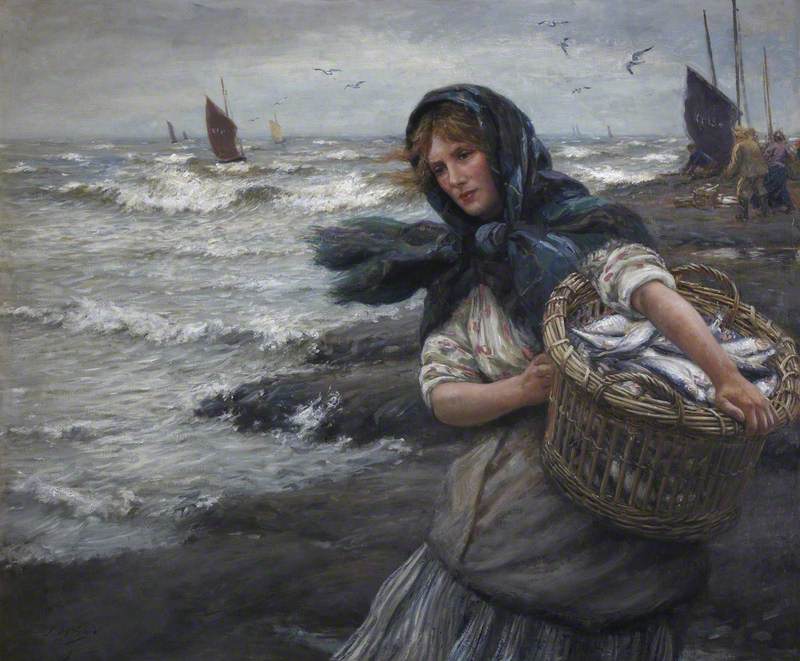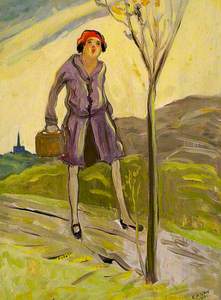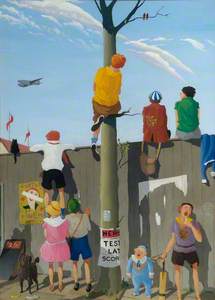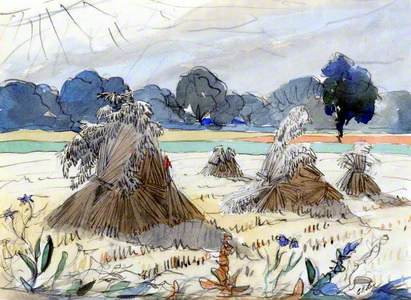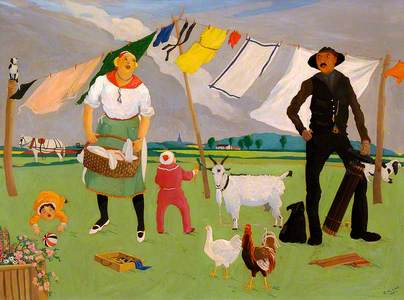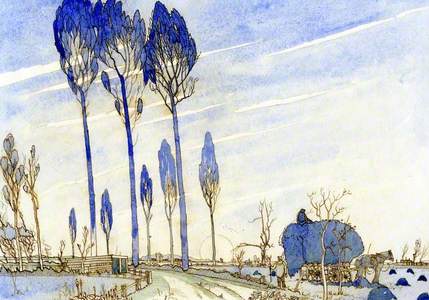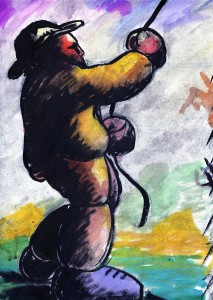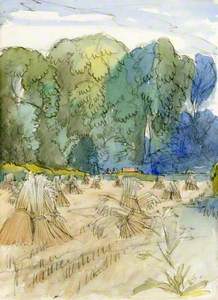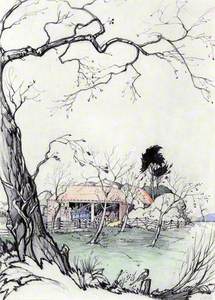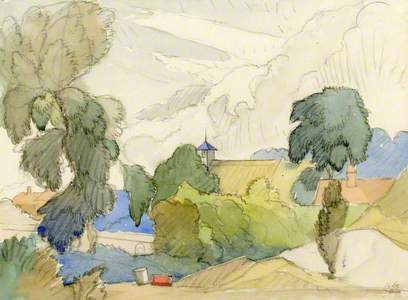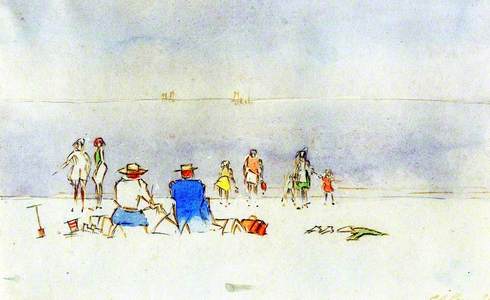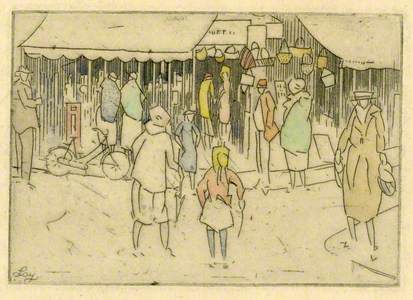Cecil Howard Lay is little known outside his native Suffolk. Born in the village of Aldringham in 1885, he died in the same village in 1956 and is buried alongside his parents and wife in the local churchyard.
He was the son of the village schoolmaster who chose to separate him from the other children by having him privately tutored, later sending him as a boarder to Ipswich School. Afterwards, he trained as an architect, first under J. S. Corder – who was much admired for his diligent study of the medieval buildings of Ipswich – and then from 1907 at The Architectural Association Schools in London. In 1912, on his return to Suffolk, he began work as an architect, creating a modest collection of local buildings strongly influenced by the Arts and Crafts and Art Deco styles of their time. His main interests, however, were art and poetry. As a young man, he travelled to Holland and Belgium, studying their rich visual culture.
Woman in a Gray Coat with a Bag
1933
Cecil Howard Lay (1885–1956) 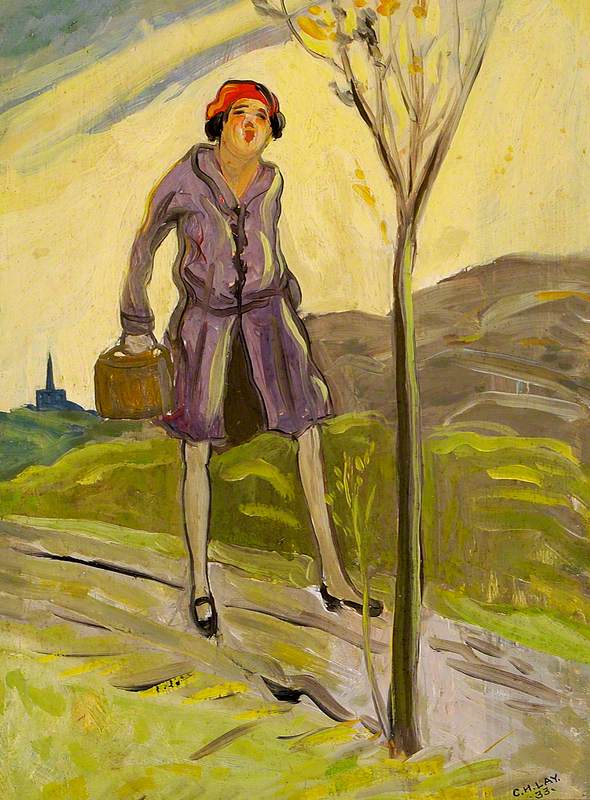
It was in Flanders where Lay first met and became life-long friends with Frank Brangwyn, a fellow artist based in Bruges. The First World War affected his spirit deeply. Though not personally involved, the horrors of the conflict left him traumatised and disturbed eventually culminating in a breakdown in 1921. Occasionally in the 1930s he exhibited at the Royal Academy, where his unusual style brought interest from the likes of Augustus John, but for much of the rest of his life, he chose to seek refuge in the quiet safety of Suffolk. He remained in the village of his birth for the rest of his life.
Lay is primarily thought of as an eccentric countryman and a keen observer of nature and rural life. In his poetry, as well as his paintings, he seeks out the small details of his local environment. His paintings in particular display an affectionate view of the world around him offering a whimsical vision of Suffolk characters and events. Two of his oil paintings are currently on show in 'Animals in the Art Gallery' at Christchurch Mansion in Ipswich until 14th April 2024, offering a rare chance to see his work in public.
Forecasting a Loss No. 2 perfectly encapsulates his interests. It is a scene of social contrasts in a country setting. A fashionable young lady in a dazzling yellow dress visits an old woman to have her future prospects read in the cards. As the title suggests, the meeting will not go well. A young scamp winks at the viewer as he removes a one-pound note from her handbag whilst she is engrossed in the cards, all watched over by a knowing man with his wife and baby. In the distance, we see a Gypsy caravan and a tent whilst the lady's bicycle and umbrella are thrown distractedly to the ground. Lay's vision may offer broad stereotypes of class and culture in the countryside but they possess a deep affection for the variety of people and traditions of Suffolk and rural England.
Cecil Lay was a self-taught artist. His architectural training brought a sophisticated sensibility to his work but this was combined with a naïve painting style and a use of vivid colouration in his oil paintings. Ensconced in his garden studio, his working process was secretive and private, with even his wife claiming to never have witnessed him painting. His working day often involved long early morning walks in which he sketched and soaked up the atmosphere of his beloved Suffolk landscape. Watercolour drawings such as Cornfield at Leiston and Landscape with Hay Cart (below) must surely have come from these long perambulations through familiar fields, woods and footpaths. As a youth, he loved to hunt for duck and rabbit and would often be seen even in later life with his shotgun. He was a regular at the village pub, The Parrot and Punchbowl, and it is claimed he designed the pub sign. Like Stanley Spencer in Cookham, Cecil Lay made Aldringham and its surrounds his whole world.
In Contrasts No. 2, dating from 1933, we see another vividly coloured and highly populated picture. Two adults by a blustery washing line, a lady in bright cheerful clothes and a chimney sweep dressed in a black suit with his chimney sticks offer a stark tonal contrast to each other. They are surrounded by children crawling on the lush green grass and a small menagerie of a goat, cat, dog, horse and hens all about. There is humour here and a hint of homely chaos. Is it possible that Lay's early interest in the profound humanity of Dutch painting with its raucous tavern scenes, peasant dances and crowded townscapes may have translated into the bright busyness of these charming Clarice Cliff-coloured scenes?
Cecil Lay's death in 1956 did not see him or his work drift entirely into obscurity. Lance Sieveking, a writer and broadcaster, had for many years been interested in Lay and all that he stood for. In 1964, he presented and narrated A Gentleman of Suffolk, a short film for Anglia Television in which he evoked the spirit of the deceased artist by visiting the key places around Aldringham that had meant so much to him.
Sieveking loved to explore the locality in his Rolls Royce, travelling at the speed of a bicycle. In the film he says: 'The narrow winding lanes of Suffolk are full of odd forgotten corners where bits of the past linger' and it was on one such expedition that he recalled a chance meeting with the artist. Having seen a scrawled 'For Sale' sign on a grand house, he ventured in to find out more. 'In the garden of the cottage, I found a tall elderly man dressed in tweeds. He was talking to a white goose...'
Lay was not only the vendor but also the architect of Raidsend, which was up for sale. The impressive home had been designed and built for Lay's mother and now stood empty. Sieveking was given the keys and 'spent a wonderful hour or so going all over the house'. He came across a large stash of Cecil Lay's paintings which were stacked unsold and forgotten against a wall and this was his introduction to this unique artist. 'He was what the French call an original. A loveable original,' says Sieveking in his narration.
Later interest came when his widow finally decided to sell his work. In 1978, an exhibition at The Fry Gallery in nearby Aldeburgh was followed by a retrospective of his long-unseen works at The Parkin Gallery in London. He remains little known as an artist, architect or poet. The range of his expression was highlighted by Sieveking when he said: 'It was a matter of chance whether what he was thinking came out as a sketch-plan for a house, a tune or as a painting or as a poem'.
Michael Sheehy, illustrator, musician and Museum Assistant, Colchester and Ipswich Museums Service



